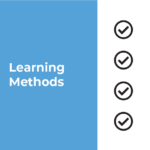Enjoy the current installment of “Weekend Reading For Financial Planners” – this week’s edition kicks off with the news that 2021 ended with inflation hitting 7% – its highest annual rate since 1982 – which makes it more likely that the Federal Reserve could raise interest rates in early 2022 (and potentially more than once throughout the year), contributing to uncertainty not only over the Fed’s ability to tamp down inflation, but also over the potential effects of higher interest rates on financial markets and the greater economy as the country continues its recovery from the pandemic.
Also in industry news this week:
- The impact of higher inflation also extends to taxes, and some components of the tax code that are linked to inflation (such as the tax brackets themselves) will see higher-than-average boosts this year (while other taxpayers could experience higher taxes from the components that aren’t linked to inflation, like the income threshold for Net Investment Income Tax)
- Though the news about the twin surges of inflation and the Omicron variant has been grim lately, a closer look at the numbers gives some cause for hope, as the rate at which inflation has increased went down between November and December, while the news from South Africa and the United Kingdom shows that the U.S. could soon see Omicron cases start to decline as swiftly as they rose initially
From there, we have several articles on efforts to improve diversity and inclusion within the financial industry:
- A new company called Choir aims to incentivize financial conferences to include more representation of women and people of color by creating a “diversity certification” (for conferences that choose to hire Choir to assess their conferences and engage Choir’s consulting services to improve their conference diversity)
- A paper suggests that “pre-CFP” designations could serve as a “gateway” to CFP certification for more diverse candidates by providing a lower-cost alternative to the CFP educational requirements that candidates can use to “test the waters” before committing to pursuing the CFP mark
- Kamila Elliott recently began her term as CFP Board chair, and though much attention has been given to her being the first Black woman to serve in that role – a significant milestone for the profession – the reality is that the industry’s diversity issues go beyond anything she can solve in her one-year term and require more structural change in the industry as a whole
We also have a number of articles on how individuals can make the most of their retirement years:
- Why a ‘challenge list’ might be a better choice than a ‘bucket list’ in retirement, and how advisors can help clients discover how they really want to spend their retirements
- While many clients are worried about running out of money in retirement, recent studies show that many retirees can actually safely increase their spending significantly (if only because they are being more conservative than they actually need to be!)
- Why many individuals can lose a sense of purpose in retirement, and how advisors can help clients develop strategies to regain this feeling
We wrap up with three final articles, all about the importance of committing to goals:
- Why personal and professional commitment is undervalued in a world of almost infinite options where we increasingly try to ‘keep our options open’ instead of committing deeply to one path in particular
- Why progress is almost never linear, and how to overcome the inevitable dips and stalls along the way
- How most success stories, from bloggers to financial advisors, are the result of years of hard work and persistence before material results start to show up
Enjoy the ‘light’ reading!







 Welcome back to the 263rd episode of the Financial Advisor Success Podcast!
Welcome back to the 263rd episode of the Financial Advisor Success Podcast!

